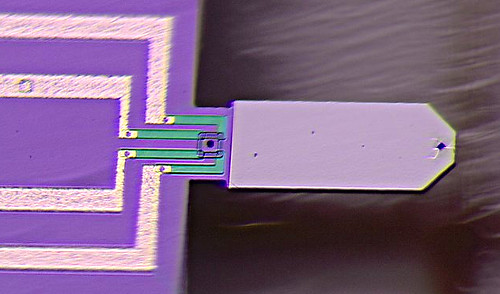Although the MIDAS instrument primarily measures the shape of collected cometary dust particles, it also has a rather interesting mode which allows it to detect and map highly magnetic minerals and materials.
This is done by magnetic force microscopy (MFM), a special type of atomic force microscopy. Typically, AFM is only weakly sensitive to material properties, which is usually great, since we can measure the shape without worrying about how the type of material affects the measurement. However, magnetic forces act over a much larger distance than the van der Waals forces and repulsive contact forces that usually act between the tip and sample. We can use this fact to our advantage by magnetising some of our tips, and making two measurements. The first detects the surface topography, as usual. But then we move the tip a few tens of nanometres away from the dust grain and measure again. Although the tip is not in contact with the sample, it still “feels” the attraction or repulsion between the magnetic tip and magnetic grain. As a result we get two independent maps, one of the topography, and another of the magnetic properties.
Technically this is done on MIDAS by adding a thin layer of a cobalt alloy to four of the sixteen tips. To make a magnetic image we then only have to select one of these tips and choose the magnetic retraction distance – how far we retreat from the surface after finding it. Too far and even the longer range magnetic forces will be too weak to influence the vibrating cantilever, too close and we risk other forces influencing our measurement. To test this in the lab, a good reference material is needed, which had a well defined magnetic pattern of an appropriate size.

One option that meets these requirements is a slice of hard drive! In recent years the data density and hence storage capacity of a typical hard drive had increased dramatically. As such, a selection of hard drive segments gives a nice collection of magnetic patterns to image.
The science that this type of measurement could enable is the subject of another post, but soon we’ll be adding some hard drive samples to our flight spare (FS) instrument and start evaluating how best to make such measurements, in preparation for arrival at the comet in 2014!
